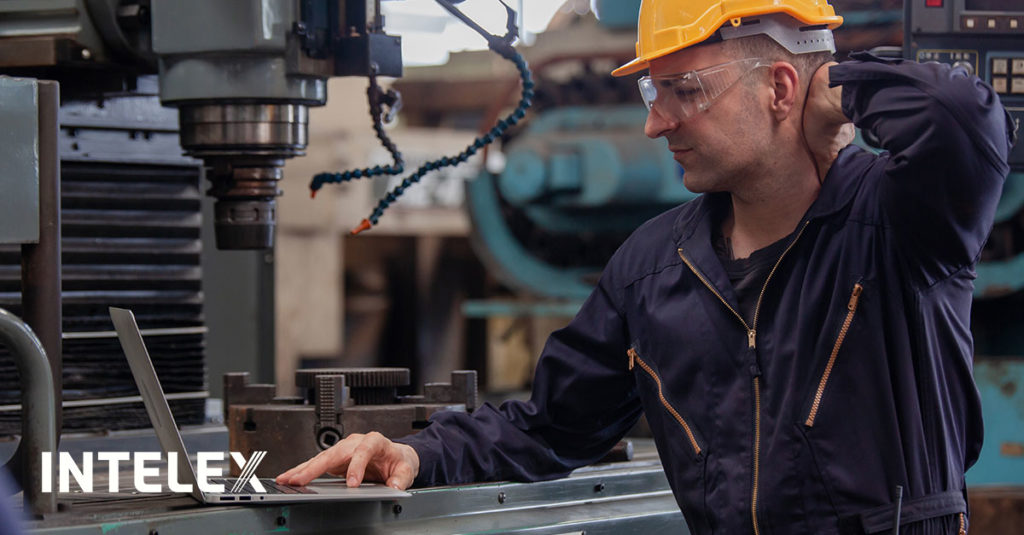Reduce Workplace MSD Costs with Proactive Safety Solutions
September 14, 2022

Musculoskeletal disorders (MSDs) are the most common cause of disability, involuntary retirement and limitations to gainful employment, according to the National Safety Council (NSC) Recognizing the need to address this prevalent workplace safety concern, the NSC released a new white paper: Preventing Work-Related Musculoskeletal Disorders: A Systematic Review of Current Interventions and Future Research Directions.
Published through its MSD Solutions Lab initiative, the report discusses the various interventions used to prevent and reduce the impact of these injuries on the job.
In 2020, NSC reported the private sector experienced more than 247,000 MSD injuries resulting in days away from work. Aside from the human toll and cost for workers themselves, MSDs in the private sector cost businesses nearly $17 billion a year, according to the Liberty Mutual Workplace Safety Index. The MSD Solutions Lab, an initiative established in 2021 by NSC with Amazon, aims to solve this omnipresent safety challenge and reduce these risks and subsequent injuries by 25% by 2025 through the MSD Pledge.
“MSDs significantly undermine business efficiencies and workers’ abilities to live their fullest lives — and more must be done to reduce these chronic, debilitating injuries,” said Paul Vincent, NSC executive vice president of workplace practice. “This white paper seeks to offer solutions to this pervasive issue based on the latest research by providing organizations of all sizes with promising intervention strategies to help prevent these injuries.”
The report references nearly 60 scientific studies and academic publications after initially identifying 13,500 potential articles on the topic. It examines interventions across the top 10 afflicted industries to determine safety initiatives that are most effective at reducing MSDs. Notably, the publication found that, consistent across multiple studies, interventions including the use of assistive devices, exoskeletons or employer-backed physical activity programs have the potential to be effective at reducing MSD discomfort, pain and injury. Programs that coupled physical modifications with cognitive processes and organizational change management forms of prevention were shown to have higher levels of effectiveness than those focusing on physical modifications alone.
“MSD prevention is not a one-size-fits-all approach, which is why it’s critical for employers to continually examine their ergonomics program initiatives and involve and listen to their workers when doing so. This white paper reinforces the fact that physical modification interventions are better when implemented in conjunction with appropriate change management, coaching and training strategies,” said Julia Abate, executive director, Ergonomics Center at North Carolina State University.
The MSD Solutions Lab also revealed findings related to the effectiveness of commonly adopted MSD interventions, prompting the call for more extensive research in these areas:
- Using innovative product designs, such as active suspension seats, as well as the right patient handling equipment and devices have shown the potential to reduce exposure to MSD risks.
- While wearables and exoskeletons are perceived to have many workplace benefits, some studies cite adverse effects on body parts not stabilized by the exoskeleton, or irritation on the body parts fitted to the device, thus highlighting a need for more research before widespread implementation.
- Further research is needed to expand upon MSD prevention measures among diverse populations.
In addition, physical activities such as stretching, walking, yoga and Pilates may be viable solutions for providing workers with relief from musculoskeletal pain, but more research is needed to understand their effectiveness across various industries.
Amazon’s Efforts to Reduce MSDs
Amazon, NSC’s partner in MSD Solutions Lab, has come under fire for its workplace safety record, and an internal memo leaked this week revealed that Heather MacDougall, Amazon’s VP, Worldwide, Workplace Health and Safety, is leaving the company Oct. 7. MacDougall, an attorney, joined Amazon in 2019 after serving as chairperson of the Occupational Safety and Health Review Commission. During MacDougall’s tenure at Amazon, the company launched an employee-designed occupational safety and health program called WorkingWell.
Part of the company’s mission to be “Earth’s Safest Place to Work” and its investment of over $300 million into safety projects in 2021, Amazon said in a press release that WorkingWell will “help prevent injuries, provide wellness services and offer quality healthcare for employees while at work and at home.” Program components rolled out to all Amazon operations sites in the United States in 2021 with the aim of cutting recordable incident rates by 50 percent by 2025.
The comprehensive program provides employees with physical and mental activities, wellness exercises and healthy eating support that are scientifically proven to help them recharge and reenergize, and ultimately reduce the risk of injury. Approximately 40 percent of work-related injuries at Amazon are musculoskeletal disorders (MSDs), which include sprains or strains caused by repetitive motions.
These types of injuries are more likely to occur among newer employees, many of whom might be working in a physical role for the first time. Results from the WorkingWell program show it has reduced these injuries and has had a positive impact on regular day-to-day activities for employees outside of work. The program – along with other company initiatives focused on early MSD prevention – has been recognized for a decrease in MSD-related injuries by 32 percent from 2019 to 2020.
Some of the activities and services offered through WorkingWell include:
- Health & Safety Huddles: Daily opportunities to engage employees on strong body mechanics, wellness topics and ongoing safety education. Operations leaders and small groups of employees gather near work stations and watch short interactive videos created by health and safety professionals and injury prevention specialists. Topics rotate on a monthly basis and include gripping and handling, pushing and pulling, nutrition and more. During its pilot phase, Health & Safety Huddles contributed to reducing MSD-related injuries and received nearly 90 percent positive feedback from surveyed employees.
- Wellness Zones: Provide employees with voluntary stretching and muscle recovery via easily accessible, dedicated spaces within Amazon’s operations buildings. These areas incorporate interactive videos and written information to help employees proactively improve their health and wellness in areas like body mechanics, wellness topics like best practices in stretching, ongoing safety education and more.
- AmaZen: Guides employees through mindfulness practices in individual interactive kiosks at buildings. During shifts, employees can visit AmaZen stations and watch short videos featuring easy-to-follow wellbeing activities, including guided meditations, positive affirmations and calming scenes with sounds. Katie Miller, who participated in a pilot of the program at an Amazon fulfillment center in Etna, Ohio, said at the time WorkingWell was launched that the program had been helpful. “Self-care is important, and AmaZen gives me an opportunity to take time for myself to just pause and regroup, which helps me be better at work,” said Miller. “When I take that time, I come back to work more focused, and it has a lasting effect on the rest of my day.”
Technology Plays a Role in Driving Engagement in Amazon’s WorkingWell
Amazon is using technology to connect with employees in buildings and at home. Some of these tech-fueled components include:
- Mind & Body Moments: Employees receive hourly prompts at their workstations that guide them through a series of scientifically proven physical and mental activities to help recharge, reenergize and ultimately reduce the risk of injury. These activities, designed to reduce muscle and mental fatigue, range from various stretching recommendations to breathing exercises and mental reflections. Since piloting this program in select sites, employees have shared that these moments improved their physical and mental wellbeing while at work.
- Connect & Comment Kiosks: Gather employee feedback to help drive improvements to current WorkingWell components and ideate on future offerings. These kiosks also give employees an onsite location to access wellness services and content, connecting them with hundreds of pieces of content including health and safety training, wellness tips, information on Wellness Centers and Mind & Body Moments.
- WorkingWell Mobile App: Designed to provide at-home access to all of the onsite safety, health and wellness offerings in Amazon buildings, including AmaZen, EatWell and Mind & Body Moments. The Working Well Mobile App offers employees a digital library to help facilitate proactive wellness behaviors like stretching and muscle recovery, mindfulness exercises and body mechanics coaching.
How Intelex Health and Safety Management Software Can Help You
For organizations looking to implement or enhance proactive safety programs like Amazon’s, Intelex Health and Safety Management Software provides the robust support needed to manage, track, and optimize workplace safety efforts effectively. Here’s how Intelex can aid in MSD prevention and workplace safety:
- Real-Time Data Collection and Monitoring: Intelex enables frontline workers to record safety observations, offering leading indicators for identifying potential risks.
- Advanced Ergonomics Programs: Organizations can use Intelex to manage ergonomics programs, track interventions, and monitor progress to ensure MSD prevention measures are effective.
- Compliance Management and Reporting: Intelex automates compliance reporting, allowing safety teams to stay informed of any gaps in compliance, such as OSHA or industry-specific requirements.
Using Intelex Health and Safety Management Software, organizations can take a proactive stance on safety, fostering a culture of continuous improvement that protects employees and promotes a safer, more productive workplace.
Practical Tips for Preventing MSDs in the Workplace
To mitigate the risks associated with MSDs, employers can adopt the following strategies:
- Implement Ergonomic Assessments: Regular assessments help ensure workspaces are optimized to reduce strain.
- Encourage Physical Wellness Programs: Stretching, yoga, or even guided exercises can alleviate muscle fatigue.
- Provide Ergonomic Training for Employees: Educating employees on safe lifting techniques and posture reduces injury risks.
- Utilize Wearable Technology: Some wearables monitor physical strain, helping workers manage their physical load and avoid overexertion.
Conclusion
Musculoskeletal disorders represent a significant financial and operational challenge, but prevention is possible with the right tools and strategies. By adopting proven MSD prevention measures and leveraging software solutions like Intelex, organizations can proactively reduce MSD risks, improve worker safety, and enhance overall productivity.
Interested in building a proactive safety culture? Download the Insight Report How Intelex Supports Safety Culture from the Front Lines to learn how frontline workers can contribute to a proactive safety environment and how Intelex’s software empowers your team to achieve strategic safety goals.






